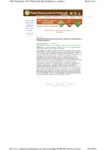Por favor, use este identificador para citar o enlazar este ítem:
http://www.alice.cnptia.embrapa.br/alice/handle/doc/918905Registro completo de metadatos
| Campo DC | Valor | Lengua/Idioma |
|---|---|---|
| dc.contributor.author | GODOY, C. V. | pt_BR |
| dc.contributor.author | XAVIER, S. A. | pt_BR |
| dc.contributor.author | MARTINS, D. C. | pt_BR |
| dc.contributor.author | CANTERI, M. G. | pt_BR |
| dc.contributor.author | MEYER, M. C. | pt_BR |
| dc.date.accessioned | 2012-03-15T11:11:11Z | pt_BR |
| dc.date.available | 2012-03-15T11:11:11Z | pt_BR |
| dc.date.created | 2012-03-15 | pt_BR |
| dc.date.issued | 2011 | pt_BR |
| dc.identifier.citation | In: PLANT MANAGEMENT NETWORK; FIELD CROPS RUST SYMPOSIUM, San Antonio, 2011. Proceedings ... Saint Paul: APS: ASA: CSSA: 2011. Abstract, 18. Disponível em: < http://www.plantmanagementnetwork.org/proceedings/FCRS/2011/posters/>. | pt_BR |
| dc.identifier.uri | http://www.alice.cnptia.embrapa.br/alice/handle/doc/918905 | pt_BR |
| dc.description | Asian soybean rust (ASR), reported for the first time in 2001 in South America, spread quickly to the major Brazilian soybean-producing regions and is considered one of the most important diseases of the crop in Brazil. Fungicides for ASR control belong to QoI (strobilurins) and SBI (azole) compounds. A lower efficiency of straight azole fungicides has been observed since 2006–2007. Embrapa Soybean Researcher Center started a sensitivity monitoring program for P. pachyrhizi in 2008–2009 to detect changes in the EC50 values (half maximal effective concentration) of the fungi population to triazoles. The bioassay has been carried out according to FRAC (Fungicide Resistance Action Committee) methodology. In the 2010–2011 growing season, leaf samples infected with P. pachyrhizi were sent from nine Brazilian states, in a total of 54 populations, and the spores collected were inoculated in detached leaves treated with the fungicides cyproconazole, metconazole, tebuconazole (0, 0.16, 0.45, 1.3, 3.8, 11, and 32 ppm), and prothioconazole (0, 0.02, 0.06, 0.164, 0.5, 1.4, and 8 ppm). Disease severity was evaluated 15 days after inoculation and only 16 bioassays showed ASR severity above 5%. The EC50 values were estimated by Proc Probit, SAS. The averages of EC50 were 0.59 for cyproconazole, 0.37 for metconazole, 0.33 for tebuconazole, and 0.1 for prothioconazole. These values were similar to the average values estimated in 2008–2009 and 2009–2010. | pt_BR |
| dc.language.iso | eng | eng |
| dc.rights | openAccess | eng |
| dc.title | Sensitivity monitoring of Phakopsora pachyrhizi populations to triazoles in Brazil. | pt_BR |
| dc.type | Resumo em anais e proceedings | pt_BR |
| dc.date.updated | 2013-06-10T11:11:11Z | pt_BR |
| dc.subject.thesagro | Soja | pt_BR |
| dc.subject.thesagro | Doença de planta | pt_BR |
| dc.subject.thesagro | Ferrugem | pt_BR |
| dc.subject.thesagro | Doença fúngica | pt_BR |
| dc.subject.thesagro | Phakopsora Pachyrhizi | pt_BR |
| dc.subject.nalthesaurus | Soybeans | pt_BR |
| dc.subject.nalthesaurus | Plant diseases and disorders | pt_BR |
| riaa.ainfo.id | 918905 | pt_BR |
| riaa.ainfo.lastupdate | 2013-06-10 | pt_BR |
| dc.contributor.institution | CLAUDIA VIEIRA GODOY, CNPSO; UEL; CNPSo; UEL; MAURICIO CONRADO MEYER, CNPSO. | pt_BR |
| Aparece en las colecciones: | Resumo em anais de congresso (CNPSO)  | |
Ficheros en este ítem:
| Fichero | Descripción | Tamaño | Formato | |
|---|---|---|---|---|
| sensitivity.fielcropssymposium.2011.pdf | 37.36 kB | Adobe PDF |  Visualizar/Abrir |









